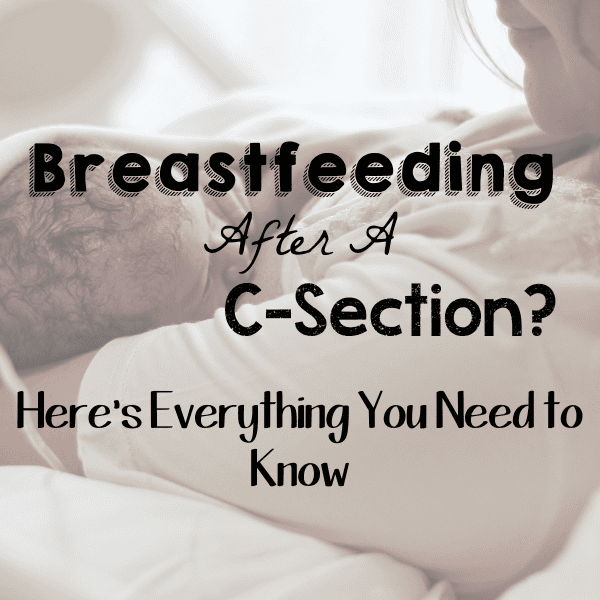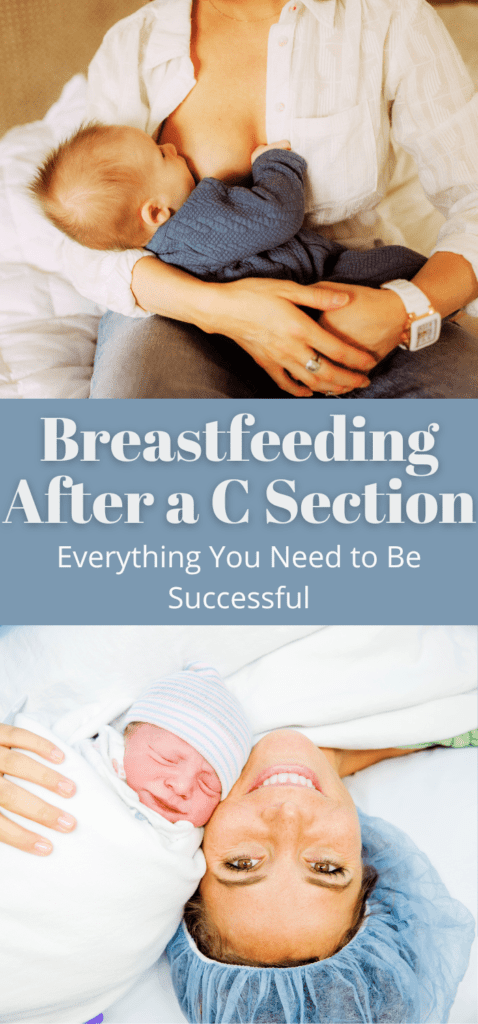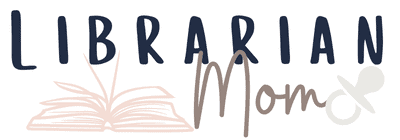Breastfeeding After a C-Section? Here’s Everything You Need to Know
“Is there anything you need?” my labor and delivery nurse asked as she pushed me into recovery.
I’d done this before and I knew the one item I needed right away. “A breast pump,” I blurted out.
She lowered her brows in confusion. “I don’t think we have those.”
I started to panic (just a little). My first baby was born early, via C-section. It took 5 days for my milk to come in. When he was 5 days old, he had to be hospitalized with severe jaundice and dehydration.
He was fine after some treatment, but for the past two years I’d gone over what I could have done differently and it started with a breast pump.
Having a C-section can create some small obstacles around breastfeeding. But those obstacles can easily be navigated. As long as you know what to do.

Everything You Need to Be Successful Breastfeeding After a C-Section
What’s Different & What’s Not
First off, let’s address some common misconceptions about breastfeeding after a C-section.
Myth 1: You can’t breastfeed if you have a C-section.
Don’t let anyone tell you this. You can breastfeed after a C-section. And things aren’t that much different.
Myth 2: Your milk doesn’t come in after a C-section.
This also isn’t true. Your body is preparing to breastfeed throughout pregnancy. So whether you have a C-section or vaginal delivery, your body is prepared to feed your baby.
However, milk can take longer to come in after a C-section.
Your baby triggers your body to make milk. Babies who are born early, have jaundice, are premature or underweight, and/or babies who are born via C-section, tend to be tired. A sleepy baby won’t want to eat.
A preterm birth also means your baby hasn’t developed the skills to breastfeed yet (since that happens in the last few weeks in utero).
All of this causes less stimulation and delays milk production.
The Good News
Even if this happens, you can still breastfeed. I have a few tricks for success that I’ll share with you.
Myth 3: Breastfeeding after a C-section is too painful.
Holding a baby across your incision for a full breastfeeding session can be painful. Use a good nursing pillow* and try the football hold or side-lying position to keep the pressure off your incision site.
Related: C-section Recovery Essentials
Myth 4: You can’t breastfeed because of pain medication after a C-section.
Some of the more intense pain medication can pass through your milk supply, but your health care provider determines the risk to the baby is minor and your need for pain relief is major (Breastfeeding After Cesarean (C-Section) Delivery, 2023). Shift to over-the-counter pain medication as soon as you are able and don’t give up on breastfeeding for this reason.
Myth 5: I’ll have trouble breastfeeding because I’ll miss the “golden hour.”
This can be a sad revelation for many C-Section moms. You won’t get skin contact with your baby in the operating room or the great start to breastfeeding that a vaginal birth gives you in the first hour. But this doesn’t mean your efforts are sabotaged. You can latch your baby in the recovery room (or even weeks later) and have a great experience with breastfeeding.
As you can see you may face additional challenges when breastfeeding after your C-section. But with a few tricks, you can make breastfeeding a success.
Problem Solving When Breastfeeding After a C-section
Breastfeeding after a C-section delivery comes with a few minor challenges. But having a C-section doesn’t mean you have to give up on breastfeeding.
A few problems you may face and ways to overcome them:
- Problem: Pain in your incision while holding your baby in a breastfeeding position.
- Solution: Use pillows or get a good nursing pillow to help support your baby and keep pressure off your incision. Try different breastfeeding holds—football and side-lying—that will take pressure off your incision.
- Problem: Your milk supply is delayed or you feel you aren’t making enough milk.
- Solution: After delivery, begin pumping after each feeding to encourage your milk to come in. Pack this nursing & pumping bra in your hospital bag so you’re prepared to breastfeed and pump immediately after surgery.
- Problem: Your baby is born early and has to spend time in the NICU (common with C-sections).
- Solution: Pump every 2-3 hours to stimulate your milk supply and feed your baby. Bring your breast pump to the hospital or ask if they’ll have one available for you.
- Problem: Your baby doesn’t latch. (A common problem with preterm babies.)
- Solution: Get as much help as possible from the hospital lactation consultant. Use a nipple shield to help your baby latch. Express colostrum and breast milk to feed your baby in the meantime.
- Continue to try to latch your baby as the weeks go by. Breastfeeding skills should strengthen around your baby’s due date. (I couldn’t latch my premature baby until he was a month old.) Schedule appointments with a lactation consultant.
7 Items that Make Breastfeeding Easier After a C-Section
Here are a few essentials you should pick up before your C-section so you’re prepared for these challenges.

1. The Best Nursing Pillow for C-section Moms
The My Brest Friend Nursing Pillow attaches to you and doesn’t slip away while you’re breastfeeding. It’s sturdy and helps keep your arms and baby up and away from your incision. Plus, it has back support and keeps your posture correct while feeding, which takes the pressure off your incision.
2. A Breast Pump
As I mentioned, C-section babies are often early babies. Early babies can struggle to latch correctly. Even if they don’t, they may be too sleepy to eat often and stimulate your milk supply.
My best tip for C-section mamas who want to breastfeed is to start pumping right away. The pump will stimulate your milk supply.
My second baby was born at 36 weeks, as soon as I got into recovery, I asked for a breast pump and started pumping. I pumped every chance I got and a day later, my milk was in (quite different from the 5 days it took with my first).
I used the Spectra Pump with both of my babies starting in the first week and liked it better than the hospital’s Medela.
Related: Breast Pumping Tips for New Moms
3. The Right Nursing Bra
After a C-section, you may need to pump and nurse. When you’re juggling a newborn, it’s important that pumping is hands-free. Switching between nursing and pumping bras is an extra step that no mom needs.
This Nursing and Pumping Bra from Kindred Bravely is the best invention for moms who need to switch between the two. (Or if you pump from one side while feeding from the other.) It’s also comfortable and supportive.
See more of my specific clothing recommendations in What to Wear After a C-Section.
4. A Nipple Shield
If your baby is early and struggles to latch, you can help them by temporarily using a nipple shield. Once they reach their due date, they should have the skills they need to breastfeed and you can ditch the nipple shield.
5. Postnatal Vitamins
Switch out your prenatal vitamins for these postnatal vitamins. They support your postpartum body and lactation.
6. HAAKA
If you pump a lot in the beginning, it can stimulate an overproduction of milk. I found the HAAKA to be the easiest way to collect extra milk.
You attach the HAAKA to the breast your baby isn’t feeding from and it draws out milk while your baby eats.
7. Milk Storage
Pick up some milk storage bags and a way to store them because before you know it, your freezer is going to be overflowing with breastmilk.
Related: First-time Mom Breastfeeding Essentials
After finding a postpartum nurse and a breast pump, I got to pumping.
I’d try latching my baby (sometimes successfully, sometimes not), then pump and feed him.
The next day, my milk was in and my 2nd baby was never dehydrated or in an emergency state.
So if you have a C-section, you may have to work a little harder to breastfeed (or you might not), but don’t let anyone tell you that you can’t do it. Get pumping right away and keep working at getting your baby to latch. You’ll be so proud of yourself when you’re successful.
I hope this article has helped in your breastfeeding journey after a C-section. I know it’s hard to put in extra effort after everything you’ve already gone through, especially if you’ve had an emergency C-section or a long labor before your C-section. But listen to your hospital staff and don’t stress if that means formula supplementation in the beginning. Keep trying and you’ll get there if being a breastfeeding mother is important to you. And if it doesn’t work out, show yourself grace and know you tried your best.
Want More Help Navigating Your C-Section?
I have a great plan for recovering from a C-Section that you can get free when you Join the Librarian Mom Community. Plus, you’ll be a part of our community with new mom support, tips for navigating mom life, and ideas for raising readers. Because no one should have to face motherhood alone.
References
Breastfeeding After Cesarean (C-Section) Delivery. (2023). HealthyChildren.org. Retrieved April 4, 2024, from https://www.healthychildren.org/English/ages-stages/baby/breastfeeding/Pages/Breastfeeding-After-Cesarean-Delivery.aspx#:~:text=Will%20pain%20medications%20after%20surgery,breast%20milk%20to%20your%20baby.

